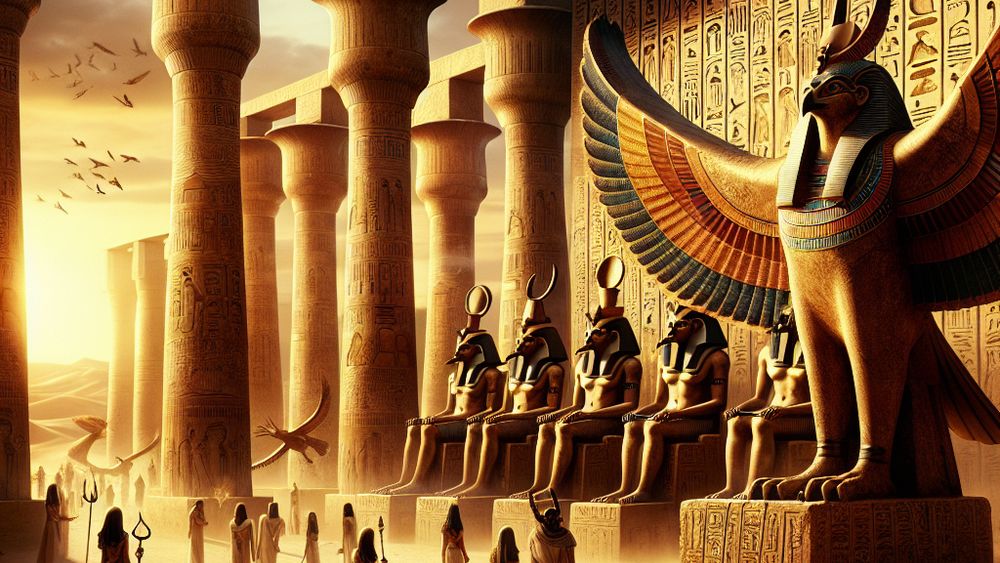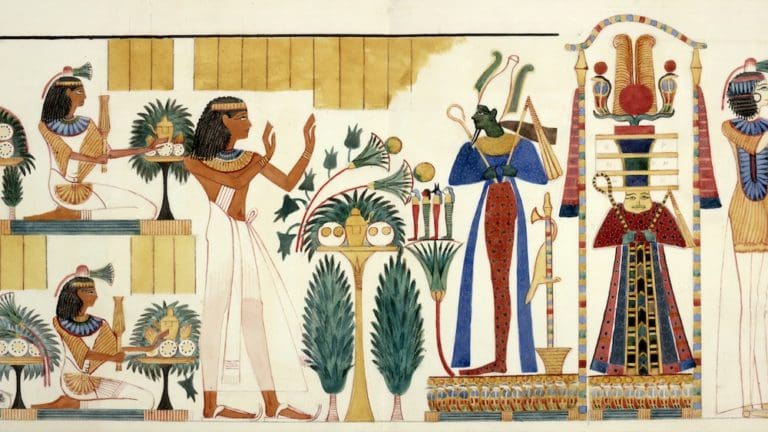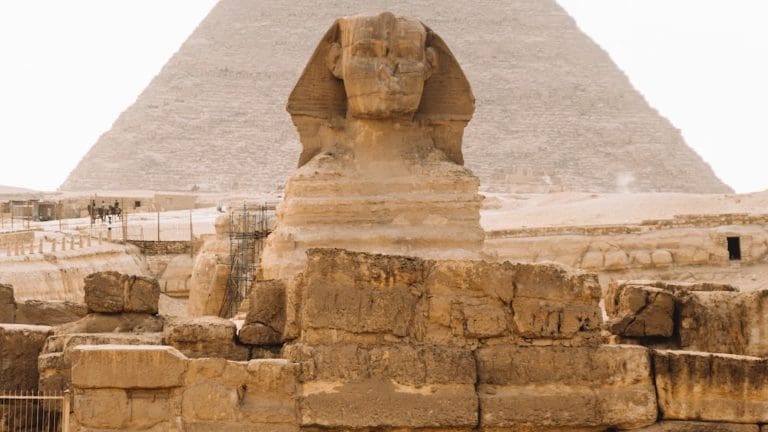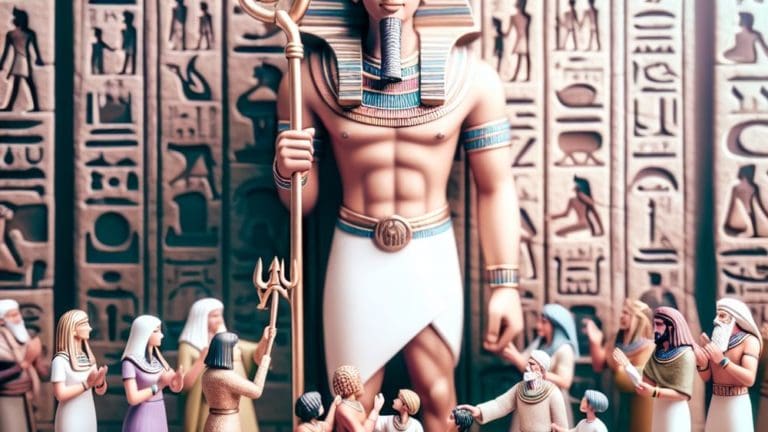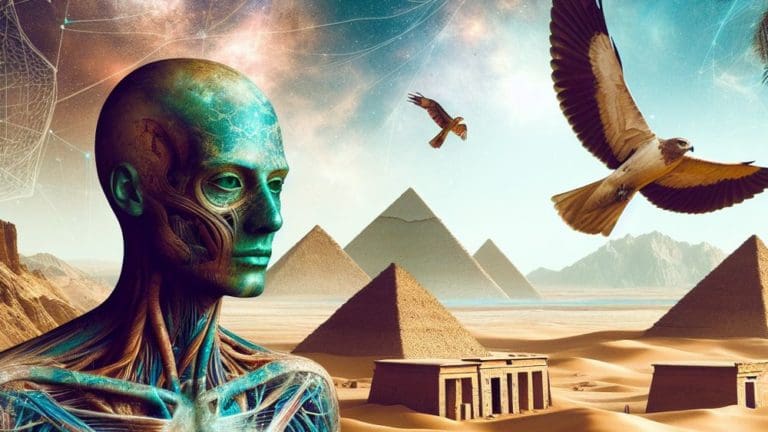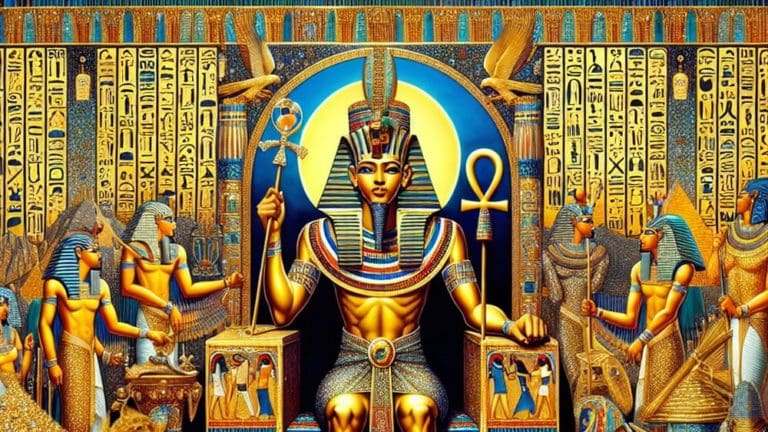Unveiling The Majesty Of The Bird Gods Of Ancient Egypt
Unveiling The Majesty Of The Bird Gods Of Ancient Egypt
Have you ever wondered about the divine creatures that soared through the ancient Egyptian skies, commanding reverence and embodying the powers of gods? The bird gods of ancient Egypt, majestic and veiled in myth and mystery, invite us into a realm where deities took flight in forms as awe-inspiring as the falcon, ibis, and even the mystical phoenix. Each one of these birds was not just an animal to the Egyptians but a representation of divine principles, offering us incredible insights into how this ancient civilization understood the world around them and beyond. What secrets do these avian deities hold, and how did they influence the everyday lives and afterlives of one of history’s most fascinating cultures?
Key Points:
- Ancient Egyptian bird gods, like Horus, Thoth, and Bennu, symbolized power, wisdom, and rebirth.
- Birds were seen as divine manifestations bridging the earthly and divine realms.
- Horus was worshipped for protection and kingship, while Thoth was revered for wisdom and knowledge.
- Bennu, similar to the phoenix, represented rebirth and creation.
- Birds played significant roles in ceremonies, acting as messengers between Pharaohs and gods.
- Birds were associated with the afterlife, serving as soul guardians and psychopomps.
- Bird motifs were prevalent in Ancient Egyptian art and hieroglyphs, reflecting their importance in both spiritual and temporal aspects of life.
The fascination with these ethereal beings summons us to explore the depths of temples, tombs, and texts, where tales of power, protection, wisdom, and rebirth unfurl. The bird gods of ancient Egypt were integral to the cosmology and daily practices of the Egyptians, serving roles that ranged from guides for the dead to symbols of power for the living. As we dive into the vibrant paranormal tapestry that these deities weave, let us embrace the thrill of discovery and the joy of unveiling hidden truths about the past. Join me on this journey of exploration, where every hieroglyph and artifact breathes life into stories long untold.
The Divine Avians of the Nile
In the lush, life-giving banks of the Nile, the ancient Egyptians observed the grace and majesty of birds, seeing them not merely as creatures of the air but as manifestations of the divine. The bird gods of ancient Egypt – Horus, Thoth, and Bennu – each bore significant mythological weight and played pivotal roles in the religion and culture of their time. These gods, taking avian forms, were not only venerated figures in the pantheon but also direct links between the earthly and divine realms, embodying the principles of power, wisdom, and rebirth that were foundational to ancient Egyptian cosmology.
Horus: The Falcon God of Power and Protection
Horus, with his piercing falcon eyes, symbolizes mastery over the sky and a protector of Pharaoh, viewed as the earthly embodiment of this mighty deity. As the son of Osiris and Isis, Horus’s narrative is one of righteous vengeance, overcoming hardship, and ascending to power, mirroring the trials and tribulations of the kingdom itself.
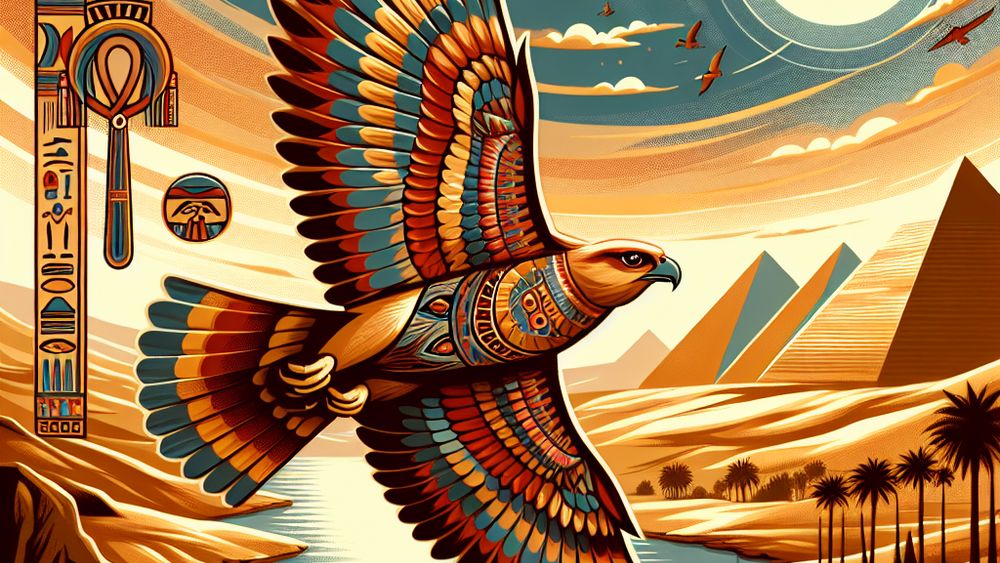
- Depicted: As a man with the head of a falcon or as a falcon wearing the crowns of Upper and Lower Egypt
- Symbolizes: Power, protection, and kingship
- Worshipped at: The Temple of Edfu, one of the best-preserved temples in Egypt, dedicated to Horus
- Associated with: The sun god Ra, reinforcing his status as a major deity of power and light
Horus symbolizes power, protection, and kingship, embodying the narrative of overcoming hardship and ascending to power.
Thoth: The Ibis God of Wisdom and Knowledge
Thoth, adorned with the head of an ibis, stood as the god of wisdom, knowledge, and writing. This deity is credited with the invention of writing and the Egyptian language, acting as a mediator between disputing gods and recording the judgments of the dead.
- Depicted: As an ibis or a baboon, both animals sacred to him, or as a man with the head of an ibis
- Symbolizes: Writing, magic, and the moon
- Worshipped at: Hermopolis, believed to be the site of Thoth’s main cult center
- Associated with: The judgment of the dead, scribing the outcome on the leaves of the sacred persea tree
Bennu: The Phoenix as a Symbol of Rebirth and Creation
The Bennu bird, akin to the phoenix of later mythologies, symbolized the cycle of death and rebirth. This primordial creature was believed to have played a role in the creation of the world, embodying the soul of Ra, the sun god.
- Depicted: As a heron with a long beak, a two-feathered crest, or resembling a Phoenix
- Symbolizes: Rebirth, creation, and the sun
- Worshipped at: Heliopolis, the center of the sun god Ra’s cult
- Associated with: The rising and setting of the sun, representing the cycles of time and existence
Symbolism and Worship of Bird Deities
The avian pantheon of Ancient Egypt teems with divine figures, where birds were not merely creatures of the sky but embodiments of the gods themselves. This profound intertwining of avian forms and deity illustrates the Egyptians’ intricate belief system where the falcon, ibis, and other bird deities held sway over the sun, the Nile, and the cycle of life and death themselves.
The Role of Birds in Pharaonic Ceremonies
Birds were central actors in the theological drama that unfolded in the temples and tombs of Ancient Egypt. They served as messengers between the Pharaohs and the gods, embodying divine will and protection.
- Horus, the falcon god, was often depicted guiding the Pharaoh in battle and overseeing state ceremonies, his imposing form signifying kingship and the sky’s vast expanse.
- In rituals, live birds were sometimes released as symbols of the soul’s ascent to the heavens, connecting the physical and divine realms.
- Priests would don animal masks, including those of birds, to embody the gods they served, becoming conduits of holy wisdom and power.
Birds served not only as spiritual guides but also as practical advisers in the form of augury, with their behavior believed to predict future events and the will of the deities.
Birds in Ancient Egypt symbolized divine connection and guidance, acting as messengers between the earthly and spiritual realms.
Sacred Birds and Their Connection to the Afterlife
In the metaphysical landscape of Ancient Egypt, birds were viewed as soul guardians and psychopomps, escorting the dead to the afterlife.
- The Bennu bird, akin to the phoenix, symbolized rebirth and creation, hinting at the cyclical nature of life and death.
- Vultures were seen as maternal protectors, their wings offering shelter to the deceased in much the same way as the goddess Isis’s embrace protected her son, Horus.
- Ibis, associated with Thoth, was revered for its connection to wisdom and knowledge, qualities esteemed in the judgment of the dead.
These avian motifs underscored a cosmology where death was but a doorway to a new beginning, mirrored in the rhythmic patterns of Nile flooding and the sun’s daily journey.
Bird Gods in Ancient Egyptian Art and Hieroglyphs
Ancient Egyptian art and hieroglyphs are rife with depictions of bird gods, each symbol communicating specific aspects of deities and cosmic principles.

| Bird Deity | Role in Mythology | Symbolism |
|---|---|---|
| Horus | Protector and sky god | Falcon-headed, embodiment of kingship and the sky |
| Thoth | God of wisdom and writing | Ibis-headed, associated with knowledge and the moon |
| Bennu | Phoenix-like, symbol of rebirth | Represents creation and the cycle of life |
The prevalence of bird motifs throughout temple walls, papyrus scrolls, and tomb paintings reinforces the birds’ omnipresence in both the temporal and spiritual realms of Ancient Egypt, bridging the world of the living with the domain of the gods.
Understanding the symbolism of bird gods in Ancient Egyptian art reveals profound connections between earthly existence and divine realms.
FAQs
1. Who was the most worshipped bird god in ancient Egypt?
The most worshipped bird god in ancient Egypt was Horus, the falcon god. Known for embodying protection and kingship, Horus held a significant place in the hearts and rituals of the Egyptians.
2. How did the ancient Egyptians perceive birds in their daily life?
In their daily life, the ancient Egyptians perceived birds as manifestations of the gods. This belief made birds highly respected, playing crucial roles in both the divine and mundane aspects of Egyptian life.
3. What are some common symbols associated with bird gods?
Common symbols associated with bird gods in ancient Egypt include the Eye of Horus, representing protection, and the ibis, linked to Thoth, the god of wisdom. These symbols were pervasive in the culture, denoting the deep-rooted reverence for avian deities.
4. How are bird gods represented in modern culture?
In modern culture, bird gods from ancient Egypt are often depicted in media, literature, and art. They inspire fascination and respect, encapsulating the mystery and wisdom of a civilization long passed.
Conclusion
The bird gods of ancient Egypt, from the powerful Horus to the wise Thoth, and the mystical Bennu, invite us into a world where the divine intersects with the natural. Their stories, woven into the fabric of history and mythology, remind us of the complex spiritual landscape of the Egyptians. These deities, with their rich symbolisms and roles, continue to fascinate scholars, travelers, and history enthusiasts alike, inspiring a deeper exploration of ancient beliefs and their echoing presence in our world today. [1]
Ending our journey through the skies of mythology and down the Nile of history, we find an everlasting legacy imprinted in stone, papyrus, and the collective human imagination. May the majesty of the bird gods of ancient Egypt soar high in our quests for knowledge and adventure. Until next time, keep looking to the past for the stories that fly beneath the radar. Warmest wishes, Cedric.

